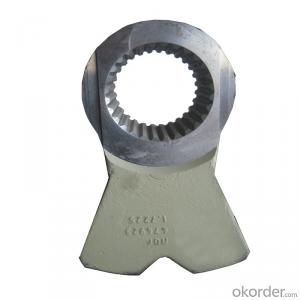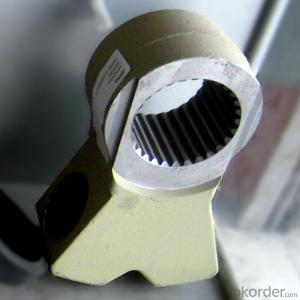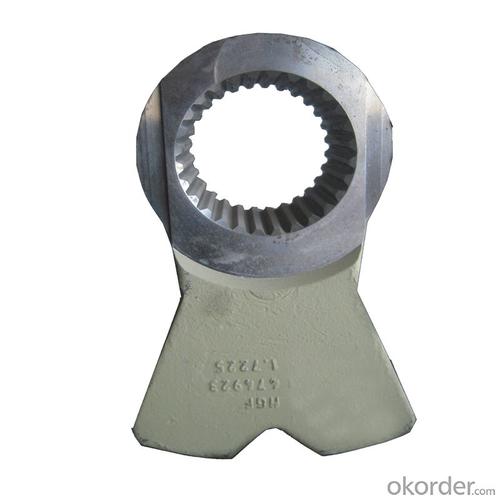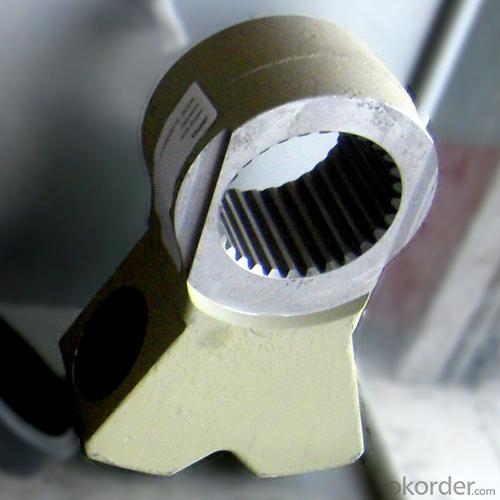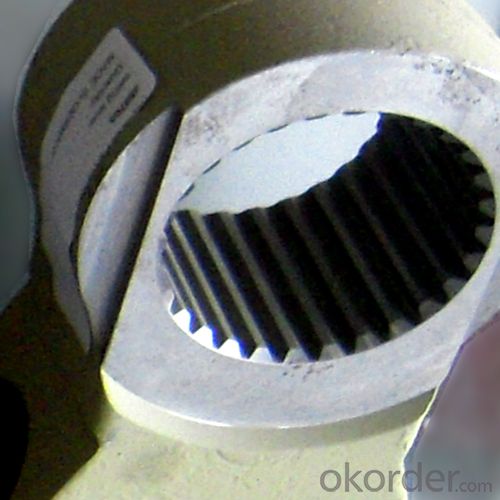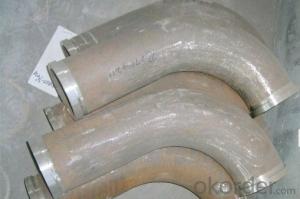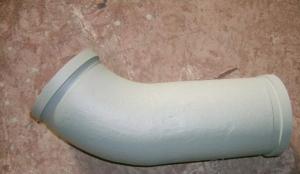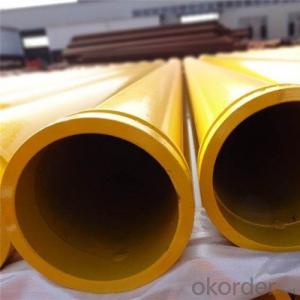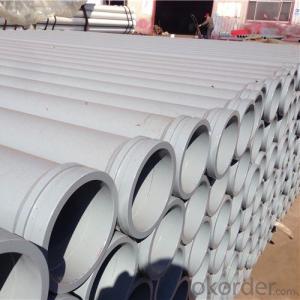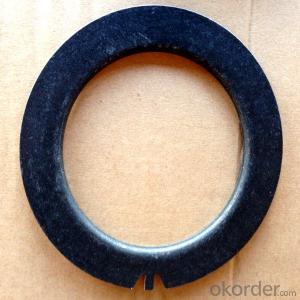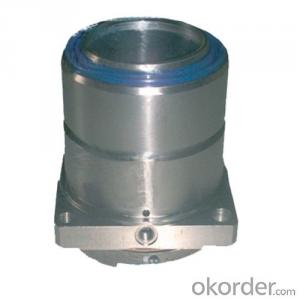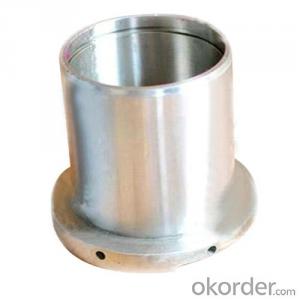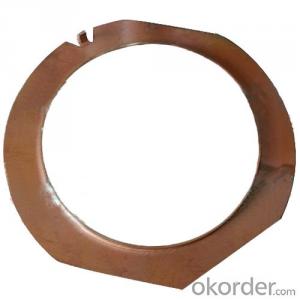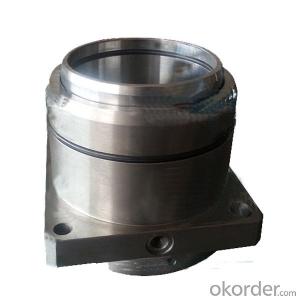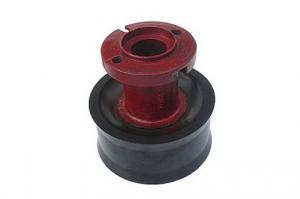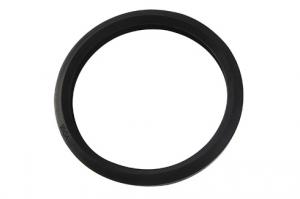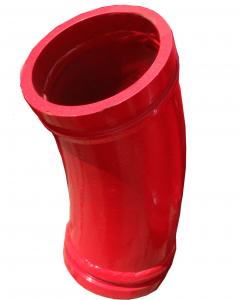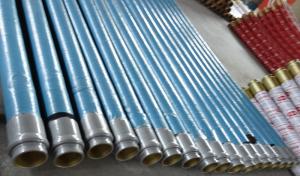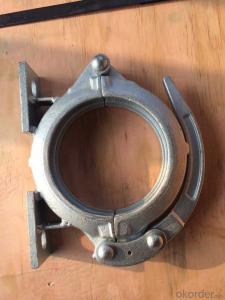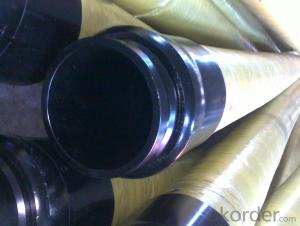Concrete Pumps Spare Parts Slewing Lever Q80
- Loading Port:
- Tianjin
- Payment Terms:
- TT OR LC
- Min Order Qty:
- 1 pc
- Supply Capability:
- 1000 pc/month
OKorder Service Pledge
OKorder Financial Service
You Might Also Like
Product Description:
The Concrete Pumps Spare Parts Slewing Lever Q80 normally made by specail steel material according to market standard and customer’s requests, it packed normally by carton plywood box and put into container.
The Putzmeister slewing levers adopt imported high-grade #45 carbon steel as raw material , which makes our
products more durable. For using with plunger cylinder, slewing cylinder, swing cylinder in S valve, S tube
system.
Scope of Application of the pipes
The Concrete Pumps Spare Parts Slewing Lever Q80 is a concrete pumps parts for combined use with other concrete parts in for concrete pumps and truck pumps. It can be widely used in the construction of various types of concrete structures like industrial and civil buildings, bridges, roads, and other types of infrastructure.
This pipes can only be used in concrete construction operations, but not in any other operations, like dragging, moving, or hoisting heavy articles or personnel. The pipe is also not allowed to be used in any location where any combustible or explosive material exists or a cave-in may occur.
Product Advantages:
OKorder's Concrete Pumps Spare Parts Slewing Lever Q80 Channels are durable, strong, and safety.
We are leading manufacturer of concrete pump wear parts in Beijing, China. Our products include wear plate&cutting ring, s valve, chrome bushing ,swing lever, wearing sleeve, spline shaft, pipe, elbow,clamp, rubber seal, delivery cylinders etc
The Putzmeister slewing levers adopt imported high-grade #45 carbon steel as raw material , which makes our
products more durable. For using with plunger cylinder, slewing cylinder, swing cylinder in S valve, S tube
system.
1, With ISO9001,TS16949 certificates
2, High availability products and quick delivery
3, High product quality of original spare parts and material
4, Satisfatory after-sales service
5, We accept manufaturing products as per your requirement/drawing
Main Product Features:
· Premium quality
· Prompt delivery & seaworthy packing (5-10 days)
Reliable performance
Easy to weld
High safety.
· Professional Service
· Competitive pricing
Measuring of wall thickness from the outside
Low purchase cost
Specifications:
CNBM No. | 2080014 |
Original No. | 254424003 |
Description | Slewing Lever Q80 |
Remark |
FAQ:
Q1: How long about delivery time Concrete Pumps Spare PartsSlewing Lever Q80 ?
A1: Normally we keep the raw materials for old customers and sometime we also keep stock products to make sure delivery time in any emergency cases.
Q2: How do we guarantee the quality of our Concrete Pumps Spare Parts Slewing Lever Q80 ?
A2: We have established an advanced quality management system which conducts strict quality tests at every step, from raw materials to the final product. At the same time, we provide extensive follow-up service assurances as required.
Q3: How soon can we receive the product after purchase?
A3: Within three days of placing an order, we will book the vessel for goods. The specific shipping date is dependent upon international and government factors, but is typically 7 to 30 workdays.
Q4: If we can produce some Slewing Lever according to customers request?
A4: Yes, we can produce Slewing Lever Q80 according to the difference country situations to make it suitable to the market and customers. We have very professional technical team to make the design.
Q5: How to make a quick resolution for after service?
A5: OKorder and our manufacture both have overseas branches all-around of world.
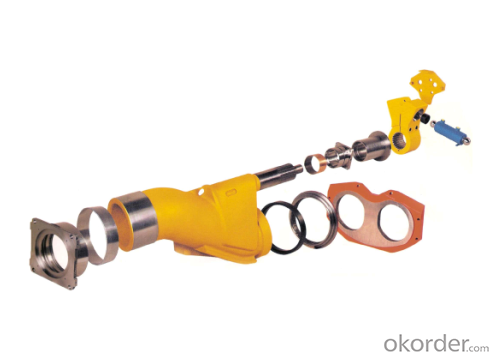
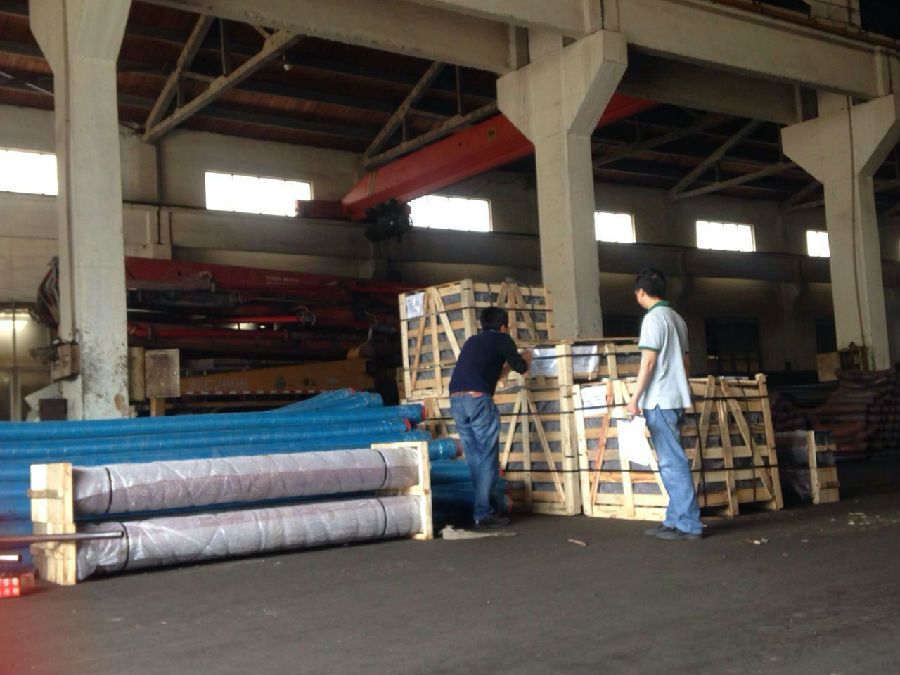
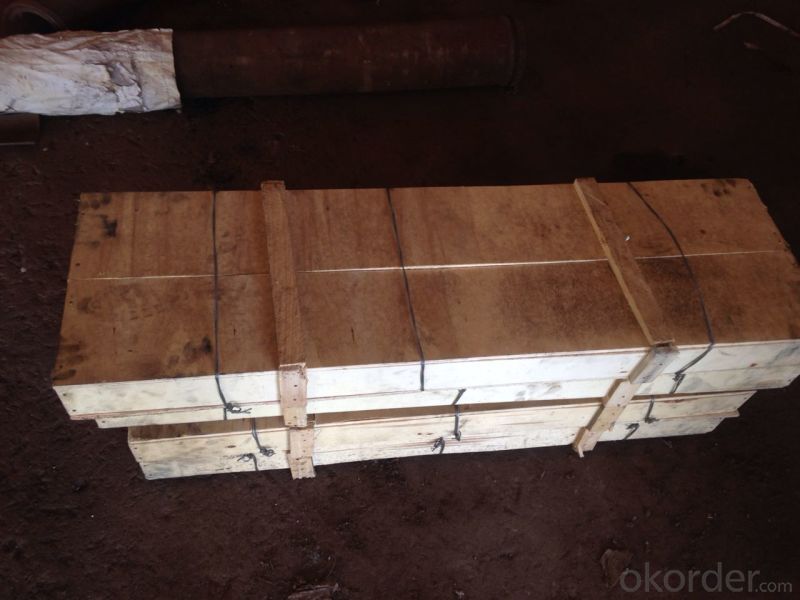
- Q: How often should concrete pump hydraulic filters be inspected and replaced?
- Concrete pump hydraulic filters should be inspected and replaced on a regular basis, ideally every 500 hours of operation or according to the manufacturer's recommendations. Regular inspection and replacement of hydraulic filters help ensure the proper functioning and longevity of the concrete pump.
- Q: What are the layout requirements of concrete pump for building engineering?
- When more than one concrete pump or pump truck is pouring at the same time, the selected location should be the closest to each other. It is better to pour the concrete at the same time, so as to avoid retaining the construction joint.
- Q: How does a hopper agitator motor ensure consistent concrete mixing?
- A hopper agitator motor ensures consistent concrete mixing by providing a continuous and powerful agitation motion within the hopper. This motion helps to break up any clumps or aggregates in the concrete mix, ensuring that all components are evenly distributed. The consistent agitation also helps to prevent settling or segregation of the mixture, resulting in a uniform and well-mixed concrete batch.
- Q: How often should concrete pump control boxes be inspected and replaced?
- To maintain proper functioning and safety, it is essential to regularly inspect the control boxes of concrete pumps. The frequency of inspections and replacements will vary depending on factors such as pump usage, operating conditions, and manufacturer recommendations. In general, it is advisable to inspect the control box at least once a year or according to the manufacturer's guidelines. However, if the concrete pump is extensively used or exposed to harsh conditions, more frequent inspections may be needed. This involves checking electrical connections, switches, buttons, and indicators for signs of wear, damage, or malfunction. Moreover, inspections should be conducted after significant maintenance or repairs on the pump, as well as following any incidents or accidents. Regular inspections allow for early identification of potential issues, enabling timely repairs or replacements and reducing the risk of breakdowns or accidents. When it comes to replacements, control boxes should be replaced if they cannot be repaired or if they are outdated and no longer meet safety standards. It is important to consult the manufacturer or a qualified professional to determine the appropriate replacement schedule based on the specific conditions and usage of the concrete pump. Always remember, regular inspections and timely replacements of concrete pump control boxes are essential for ensuring the safe and efficient operation of the equipment.
- Q: Are there any specific guidelines for the installation of seal kits or O-rings in concrete pump spare parts?
- Concrete pump spare parts have specific guidelines for the installation of seal kits or O-rings. Here are some general guidelines you should follow: 1. Prioritize safety: Before attempting installation, make sure the concrete pump is turned off and depressurized. Protect yourself by wearing appropriate safety gear like gloves and goggles. 2. Prepare the area: Thoroughly clean the installation area to ensure a smooth and debris-free surface for the seal kits or O-rings. 3. Inspect the parts: Before installation, carefully examine the seal kits or O-rings for any defects or damage. Replace any faulty parts with new ones. 4. Apply lubrication: To facilitate installation and prevent damage, use a small amount of compatible lubricant or hydraulic oil on the seal kits or O-rings. Ensure the lubricant is suitable for the materials used. 5. Align correctly: Align the seal kits or O-rings with their respective grooves or seating areas in the concrete pump. Make sure they are properly seated and positioned. 6. Install properly: Use the appropriate tools and techniques to install the seal kits or O-rings. Avoid applying excessive force or bending, as this can cause damage or improper sealing. 7. Test for functionality: After installation, test the concrete pump to ensure the seal kits or O-rings are functioning properly. Check for leaks or any abnormal behavior during operation. 8. Maintain regularly: Regular inspection and maintenance are crucial for the longevity and optimal performance of the seal kits or O-rings. Follow the manufacturer's recommended maintenance schedule and guidelines. It's important to note that these guidelines are general and may vary depending on the specific make and model of the concrete pump. Always consult the manufacturer's instructions and guidelines for the particular seal kits or O-rings being installed.
- Q: Can I get spare parts for both concrete pumps with and without lubrication systems?
- Yes, you can get spare parts for both concrete pumps with and without lubrication systems. Many manufacturers and suppliers offer a wide range of spare parts for different types and models of concrete pumps. These spare parts include components like valves, cylinders, pistons, seals, hoses, and filters, among others. Whether your concrete pump has a lubrication system or not, you should be able to find the necessary spare parts to maintain and repair it. It is recommended to consult the manufacturer or a reputable supplier to ensure you get the correct spare parts for your specific concrete pump model.
- Q: How do I properly maintain and replace hydraulic motors in concrete pump spare parts?
- Proper maintenance and replacement of hydraulic motors in concrete pump spare parts involves several key steps. Firstly, it is crucial to regularly inspect and clean the motors to remove any dirt, debris, or build-up that may affect their performance. Additionally, checking and topping up the hydraulic fluid levels is essential to ensure optimal operation. Regularly monitoring the motors for any signs of leaks, unusual noises, or decreased efficiency is also important. If any issues are detected, prompt repairs or replacements should be undertaken by experienced professionals to prevent further damage. It is recommended to follow the manufacturer's guidelines and specifications for maintenance and replacement procedures to ensure the longevity and reliability of the hydraulic motors.
- Q: Are there any specific safety precautions while replacing concrete pump spare parts?
- Yes, there are several safety precautions that should be followed while replacing concrete pump spare parts. 1. Personal Protective Equipment (PPE): It is essential to wear the appropriate PPE, including safety goggles, gloves, helmet, and steel-toed boots to protect yourself from potential hazards. 2. Lockout/Tagout: Before replacing any spare parts, make sure to follow proper lockout/tagout procedures. This involves disconnecting and securing the power source to prevent accidental startup of the pump. 3. Equipment Inspection: Prior to starting the replacement process, inspect all tools and equipment for any signs of damage or defects. Faulty equipment should never be used, as it can pose serious safety risks. 4. Proper Lifting Techniques: When handling heavy spare parts, use proper lifting techniques to avoid strain or injury. Ensure that you have proper assistance and equipment, such as cranes or forklifts, if needed. 5. Work Area Safety: Keep the work area clean and well-organized to prevent trips, slips, and falls. Remove any obstacles or debris that may pose a hazard during the replacement process. 6. Proper Training: Only trained and authorized personnel should be involved in replacing concrete pump spare parts. They should have a clear understanding of the equipment and procedures to minimize the risk of accidents. 7. Follow Manufacturer's Instructions: Always refer to the manufacturer's guidelines and instructions when replacing spare parts. This will ensure that the process is carried out safely and correctly. 8. Emergency Preparedness: Have a plan in place for any potential emergencies, such as a fire or injury. Ensure that fire extinguishers and first aid kits are readily available and that all workers are familiar with their locations and usage. By adhering to these safety precautions, you can minimize the risk of accidents, injuries, and damage while replacing concrete pump spare parts.
- Q: Can concrete pump spare parts be repaired on-site, or should they be sent to a specialized repair facility?
- Concrete pump spare parts can be repaired on-site in certain cases, while in others it may be necessary to send them to a specialized repair facility. The decision of whether to repair on-site or send for specialized repair depends on the nature and complexity of the repair required, the availability of skilled technicians and equipment, and the time constraints of the project. In many cases, minor repairs or replacements of simple components can be carried out on-site. These may include tasks such as replacing hoses, seals, or filters, which can be done quickly and easily with basic tools and equipment. These types of repairs can often be performed by the operators or maintenance personnel themselves, without the need for specialized technicians. However, for more complex repairs or replacements, it is advisable to send the spare parts to a specialized repair facility. This is particularly true for critical components such as hydraulic cylinders, valves, or control systems, which require specialized knowledge and expertise to repair properly. Specialized repair facilities have trained technicians who specialize in specific equipment and are equipped with the necessary tools and resources to diagnose and fix complex issues. Moreover, specialized repair facilities often have access to a wider range of spare parts and can source genuine parts from the original manufacturer. This ensures that the repaired spare parts are of high quality and compatible with the specific make and model of the concrete pump. Additionally, these facilities may offer warranties on their repairs, providing peace of mind to the equipment owners. Ultimately, the decision to repair on-site or send for specialized repair depends on the specific situation and resources available. It is important to assess the complexity of the repair, the availability of skilled technicians, and the potential impact on the project timeline before deciding on the most appropriate course of action.
- Q: What is the importance of a concrete pump control valve?
- A concrete pump control valve is important because it allows for precise control and regulation of the flow rate and pressure of concrete being pumped. This ensures that the concrete is delivered accurately and efficiently to the desired location, preventing wastage and improving overall productivity of the construction process. Additionally, the control valve prevents blockages and potential damage to the pump by allowing operators to adjust the flow as needed, maintaining a smooth and continuous operation.
Send your message to us
Concrete Pumps Spare Parts Slewing Lever Q80
- Loading Port:
- Tianjin
- Payment Terms:
- TT OR LC
- Min Order Qty:
- 1 pc
- Supply Capability:
- 1000 pc/month
OKorder Service Pledge
OKorder Financial Service
Similar products
Hot products
Hot Searches
Related keywords
